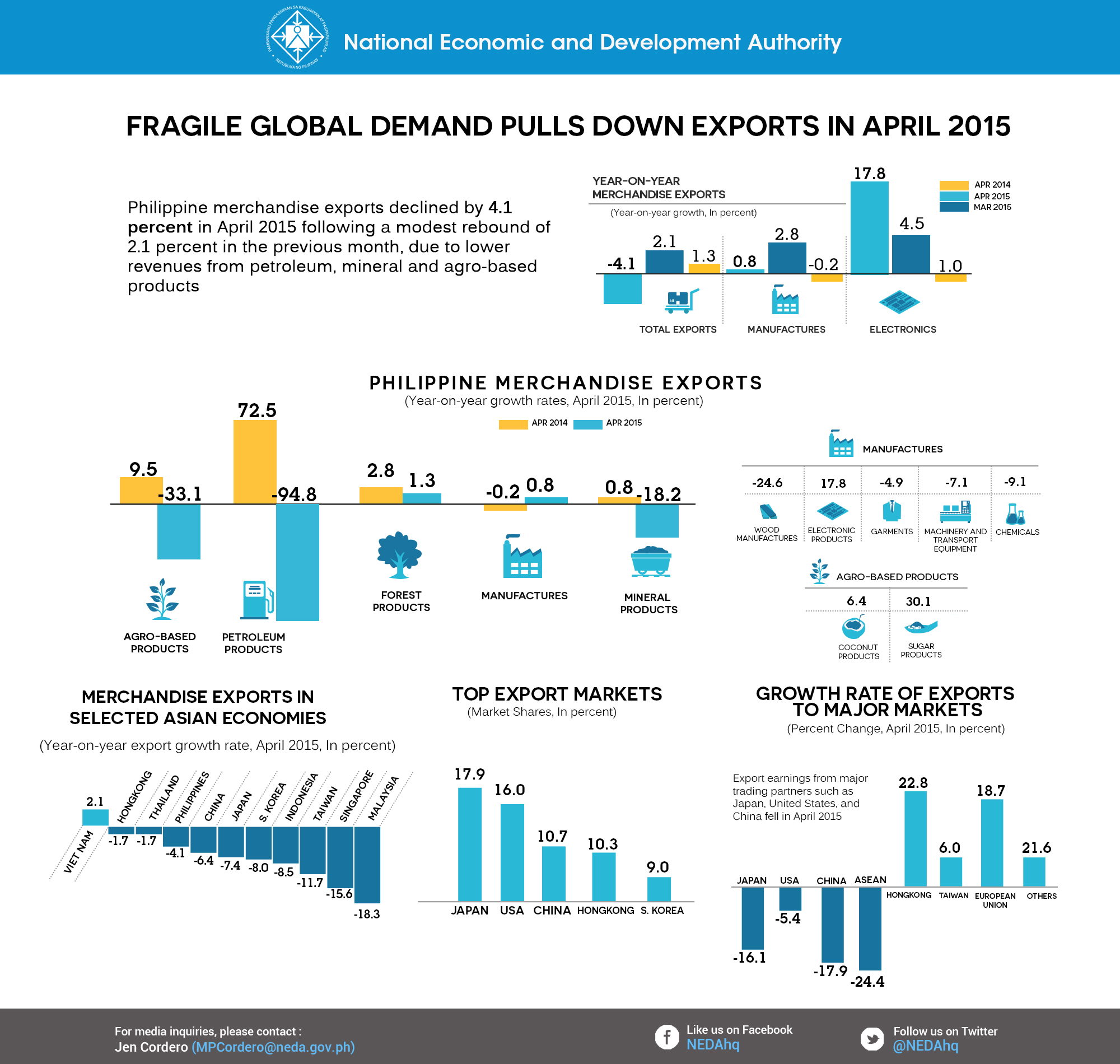MANILA – Philippine merchandise exports declined by 4.1 percent in April 2015 following a modest rebound of 2.1 percent in the previous month, due to lower revenues from petroleum, mineral and agro-based products, according to the National Economic and Development Authority (NEDA).
The Philippine Statistics Authority reported that the total value of outward shipments fell to US$4.4 billion in April 2015 from US$4.6 billion in the same period last year.
“The decline is partly reflective of fragile global economic conditions, as most trade-oriented economies in East and Southeast Asia also registered negative export performance in April 2015, with only Vietnam in positive territory. Weaker demand conditions in some of our major trading partners, particularly China, were seen,” said Economic Planning Secretary Arsenio M. Balisacan.
The country’s outbound shipment of petroleum products amounted to US$2.7 million in April 2015, a sharp decline of 94.8 percent from US$52.0 million recorded in April 2014.
“Falling crude oil prices in the international market continue to partly affect the country’s exports as reflected in the year-on-year declines in the volume of petroleum exports to Singapore, Malaysia, Thailand, and Cambodia,” the Cabinet official said.
Similarly, exports of mineral products decreased by 18.2 percent in April 2015 to US$260.3 million from US$318.0 million in April 2014 due to lower earnings from copper concentrates and iron ore agglomerates.
Also, total exports revenue from agro-based products dropped by 33.1 percent to US$231.0 million in April 2015 from US$345.0 million in April 2014 as sharp contractions were recorded in fruits & vegetables.
“The production of agro-based commodities will continue to feel the impact of prolonged drought in tandem with the occurrence of stronger and erratic typhoons. This will ultimately affect production,” said Balisacan, who is also NEDA Director-General.
He stressed the need for government to fast-track and to strengthen initiatives like infrastructure support, hybrid seeds and advanced weather sensing facilities to lessen the impact of extreme weather conditions on agriculture.
“These initiatives, if undertaken, will help stabilize supply of exported agro-based commodities and provide steady income for workers in agriculture,” said Balisacan.
He emphasized that the country’s export sector remains vulnerable to declining demand from major trading partners. The softening of economic activity in China as well as the still fragile economic growth of Japan remains a downside risk for the Philippine export sector.
“To counter the weak demand from our major markets, the government should maximize existing trade agreements, especially with emerging economies benefitting from the low oil price environment. Also, this shows the importance of restoring traction in government spending,” said Balisacan.
–END–




